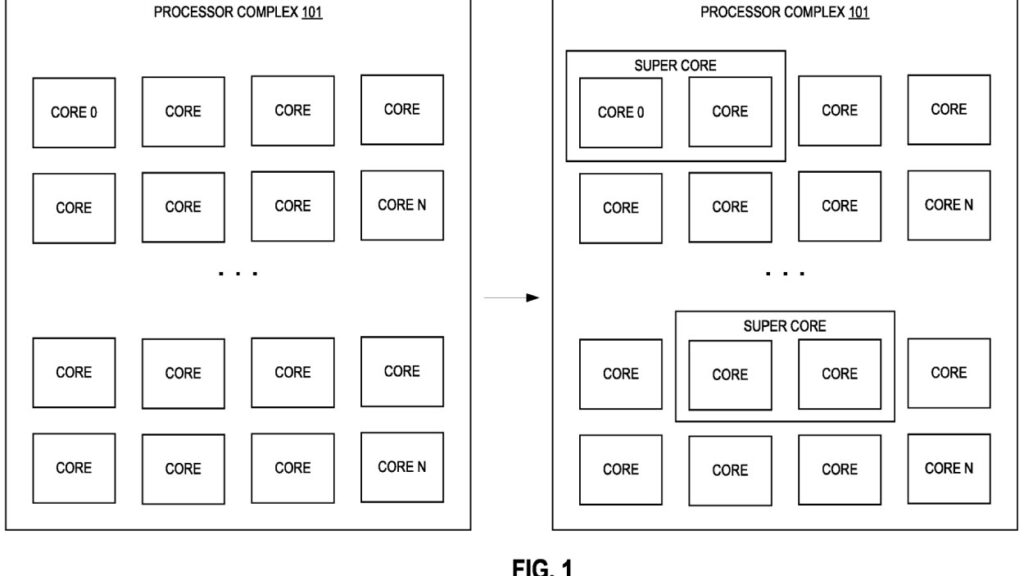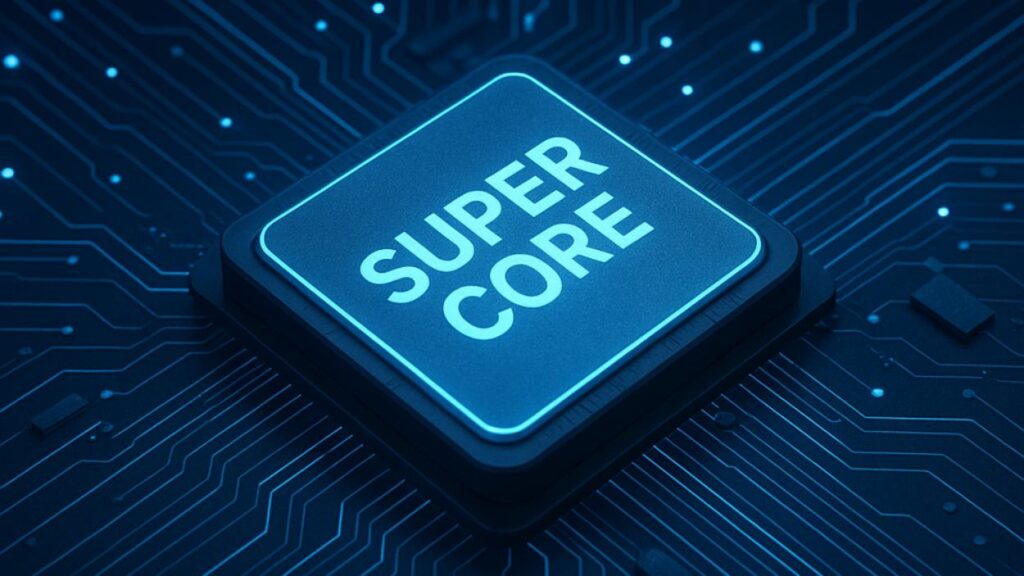Intel’s latest CPU patent could dramatically improve performance using software instead of hardware upgrades.
TLDR:
- Intel has patented a new tech called Software Defined Supercore (SDC) aimed at boosting single-thread CPU performance using software.
- The technology fuses multiple cores into one virtual super core to process a single thread more efficiently.
- SDC promises better performance without increasing clock speeds, voltage, or power draw.
- The concept could solve one of the biggest bottlenecks in modern computing: single-core limitations.
What Happened?
Intel has filed a new patent detailing a radical shift in CPU design, focusing on improving performance through software rather than just hardware upgrades. Known as Software Defined Supercore (SDC), the technology proposes combining multiple CPU cores to behave like a single, more powerful core specifically for single-threaded workloads.
The patent, filed in 2023 and published in July 2025, shows Intel’s long-term commitment to solving challenges in processor architecture.
How SDC Works?
Traditional CPU performance gains have often relied on higher clock speeds or more complex, power-hungry cores. However, Intel’s SDC aims to take a more efficient route by using software to bind smaller cores together dynamically.
- SDC breaks a single-thread task into blocks, assigning each to a different core, then combines the output in real time.
- This allows parallel execution while maintaining the order of instructions, a key requirement for single-thread reliability.
- Intel is using techniques like Shadow Store Buffer to ensure that data handling and execution order remain accurate.
- Crucially, the supercore is activated only when needed, giving the CPU flexibility to switch between normal and performance modes based on workload.
This kind of adaptability is important for modern computing, where some applications thrive on multi-threading, while others still demand strong single-thread performance. Games, older software, and certain scientific programs are some examples that benefit from single-thread optimization.

The Challenge and the Opportunity
While the idea is innovative, executing it poses significant challenges:
- Synchronization between cores must be nearly perfect to avoid performance penalties.
- Low-latency communication between the fused cores is essential.
- Operating systems must also adapt to recognize and schedule tasks correctly on these super cores.
Intel acknowledges these hurdles but seems optimistic. It has not yet confirmed when this feature will appear in commercial chips, which is typical for patents that serve more as intellectual property safeguards than product announcements.
A Shift in CPU Philosophy?
What makes SDC especially notable is how it flips the classic approach to CPU scaling. Instead of dividing a workload across multiple cores (the principle behind multi-threading), Intel is suggesting that cores team up to complete a single-thread task faster and more efficiently.
This shift could solve a long-standing dilemma in CPU design: how to balance high single-core performance with overall efficiency. If it works as Intel intends, developers might no longer have to choose between scaling out with multi-core support or optimizing for single-thread performance.
What TechKV Thinks?
I think this is one of the most exciting CPU developments we’ve seen in a while. For years, the industry has been locked in a tug-of-war between pushing for more cores and increasing clock speeds. But both paths have hit limits in terms of power and heat. Intel’s SDC idea could be a way to sidestep those problems entirely.
If they pull it off, this could be as significant as the shift to multi-core CPUs back in the 2000s. It won’t be easy. Getting the software stack and OS to cooperate will be tricky. But the potential upside is huge, especially for gamers and professionals relying on older, single-thread-heavy applications. I’ll be watching closely to see where this goes.
